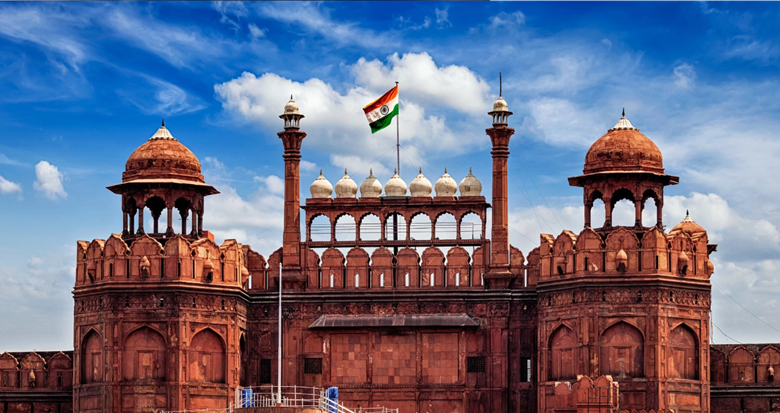Independence Day 2024: The Historic Significance of Delhi’s Red Fort

News Mania Desk/Agnibeena Ghosh/15th August 2024
The Red Fort, or Lal Qila, stands as a symbol of India’s rich history and cultural heritage, deeply intertwined with the nation’s struggle for independence. Originally the main residence of the Mughal emperors, this iconic fort in Delhi was commissioned by Emperor Shah Jahan on May 12, 1639, following his decision to move the capital from Agra to Delhi.
A Glimpse into the Red Fort’s History
Delhi’s prominence as a capital city dates back to the Delhi Sultanate era (1206-1506), where it served as the governing center for much of northern India. In the 16th century, Babur, the founder of the Mughal dynasty, referred to Delhi as the ‘capital of all Hindustan,’ solidifying its importance. Although Emperor Akbar temporarily relocated the Mughal capital to Agra, Delhi retained its significance under subsequent Mughal rulers.
In 1648, during Shah Jahan’s reign, Delhi was reestablished as the Mughal capital with the founding of Shahjahanabad, now known as Old Delhi. The Red Fort in Shahjahanabad became the Mughal rulers’ stronghold until 1857. Despite the decline of their political power, the Mughal emperors continued to hold symbolic authority, primarily due to their connection to Delhi.
As historian Swapna Liddle noted, even as Mughal territories shrank and the emperor’s practical power diminished, the symbolic importance of the Mughal emperor persisted. Various new powers, including the East India Company, governed in his name and minted coins in his honor well into the 19th century, underscoring the enduring legacy of the Mughals in Delhi.
The British Takeover and Its Impact
The Rebellion of 1857, also known as the First War of Indian Independence, brought the symbolic power of the Mughal emperor into sharp focus. The mutineers declared the aging Mughal Emperor Bahadur Shah Zafar as their ruler, reflecting the deep-rooted significance of Delhi and its Mughal heritage. Although Delhi was not a primary focus for the East India Company at the time, it remained a potent symbol of native authority for the rebels.
In the aftermath of the 1857 rebellion, the British sought to erase the Mughal presence from Delhi. They demolished significant parts of the city, including notable Mughal sites like the Akbarabadi mosque and the Urdu Bazaar. While the British did not entirely destroy the Red Fort, they stripped it of its Mughal splendor. Many of the fort’s internal structures were repurposed for British military use, with approximately 80 percent of the original interior being replaced. The Diwan-i-Aam, once a grand reception hall, was converted into a medical facility, marking a significant transformation of the fort’s purpose and appearance.
Today, the Red Fort reflects a unique blend of British influence and Mughal legacy, symbolizing the complex history of India during the colonial period.
The Red Fort’s Role in India’s Independence Movement
In the years leading up to India’s independence, the Red Fort gained renewed significance. Under the leadership of Subhas Chandra Bose, the Indian National Army (INA) made an ambitious attempt to advance towards India from Burma in 1943. Although the campaign ultimately failed, and Bose tragically died in a plane crash, the trials of high-ranking INA officials at the Red Fort from 1945 to 1946 intensified nationalist sentiments. These trials turned the fort into a symbol of resistance against British rule.
Thus, when Jawaharlal Nehru raised the Indian flag at the Red Fort on August 15, 1947, it was more than just a ceremonial act; it was a powerful gesture of reclaiming the fort from British colonial control. As Swapna Liddle pointed out, the fort’s symbolic return to the Indian people was crucial in the post-independence era, cementing its role in national celebrations and Independence Day observances.
The Red Fort remains a testament to India’s rich history, serving as a reminder of the nation’s resilience and its enduring quest for freedom.






